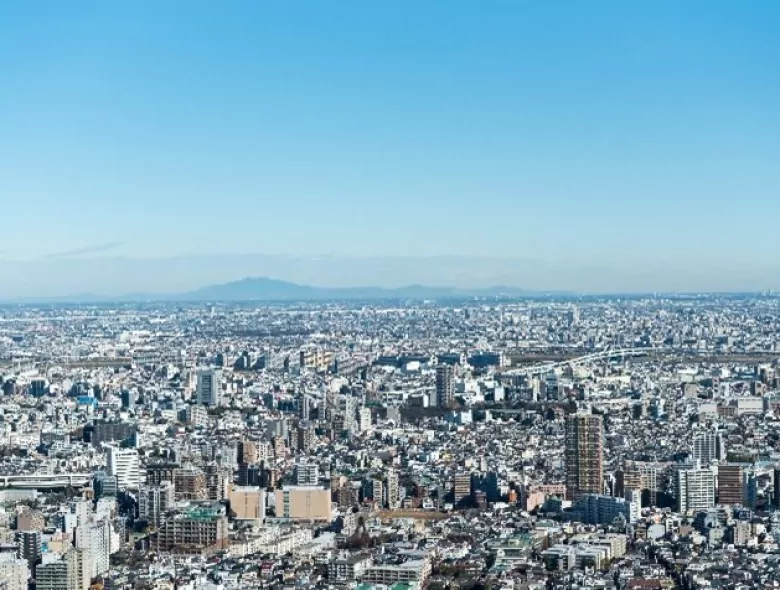Wondering what living in Ibaraki is like? Here is a guide to living in the northern Kanto prefecture!

Living in Ibaraki: Tsukuba
If you are interested in living in Kanto, Tsukuba is one of the most well-known cities in Ibaraki. Home to the University of Tsukuba, college students comprise a significant number of Tsukuba’s population. Traditionally, the local Tsukuba economy was based on rice cultivation, and Tsukuba still has the largest number of rice paddy fields in the prefecture. However, it has become a hub for scientific and research activities in more recent years.
About 60,000 foreign residents are living in Ibaraki, and many of them are living in Tsukuba, where there is an international school. Tsukuba Science City is a very livable place for foreign residents, with specialized housing for foreign researchers. In addition, the city offers various support services in many different languages, and rent for Tsukuba apartments is relatively cheap compared with Tokyo apartments.

Living in Ibaraki: Hitachi
Hitachi is a major industrial city producer of electronic products. It also has a largely agricultural economy. Hitachi is well known for Hitachi Seaside Park, a popular attraction that draws in many people from Tokyo, as well as other parts of Japan. The Hitachi Seaside Park is an extremely popular location for viewing flowers in the spring and summer. If you’re looking for a quieter pace of life in a rural area, living in Hitachi is for you. There are more job opportunities than most rural areas in Japan, and it is a beautiful place to live. Additionally, rent in Hitachi is substantially cheaper if you need to commute towards the Tokyo area.

Climate in Ibaraki
The climate of Ibaraki is considered to be a humid subtropical climate. Located in northern Kanto, Ibaraki gets much colder and sees much more snowfall than Tokyo in the winter months. Despite the cold winters, summers are quite warm and humid. Ibaraki experiences a significant amount of rainfall, even during the driest months of the year.
The average temperature is around 15 degrees celsius, with a low of 3 degrees in the winter and a high of 25 degrees in the summer. Like most of eastern Japan, the most common natural disasters that occur in Ibaraki are earthquakes. The coastal area is also prone to tsunamis, and tornados occasionally occur in the southern part of the prefecture.

Transportation in Ibaraki
While buses and trains are available, public transportation in Ibaraki is somewhat limited. If you’re in or near Tsukuba, it’s easy to access Tokyo via the Tsukuba express. In other parts of Ibaraki, it’s much easier to get around if you have a car.
With a car, it’s easy to get to Tokyo, Saitama, Chiba, Fukushima, or Tochigi prefecture within a few hours, depending on which part of Ibaraki you live in. If you don’t want to get a car, it’s best to get a scooter or motorcycle. It’s difficult to get around on public transportation in Ibaraki unless you’re willing to make a lot of inconvenient transfers. In addition, buses in Ibaraki can be a bit less reliable than the highly punctual public transportation in cities like Tokyo. At the very least, you should get comfortable riding a bicycle.
Economy of Ibaraki
While many people in Ibaraki commute to Tokyo for work, local job opportunities are available for working in Ibaraki. Ibaraki is the second-largest producer of agricultural products in Japan. In addition, it is the 8th largest manufacturing hub.

As a coastal prefecture, fishing is also a large part of the local economy in Ibaraki. In Tsukuba, there are many research and science-related jobs. Almost 40% of researchers in Japan work in Tsukuba. In addition to the University of Tsukuba and government research facilities, a large number of private companies in Tsukuba employ scientists.
Recreation and Attractions in Ibaraki
As a rural prefecture with lots of nature, Ibaraki is a popular destination for hiking trips. Many people from Tokyo enjoy hiking Mount Tsukuba.
If you prefer the sea to the mountains, the coastal part of Ibaraki is full of lovely beaches. Ajigaura Beach is one of the most popular ones, and it is close to Hitachi Seaside Park. Mito, the capital city of Ibaraki, is well known for having a nice botanical garden. There are also the Fukuroda Falls in Daigo, which is considered one of the top three waterfalls in Japan.
Living in Ibaraki has a lot to offer with many exciting destinations. Another popular attraction is the Ushiku Daibutsu, the tallest Buddha statue in Japan. For those interested in science and technology, there are several interesting museums in Ibaraki, most of which are located in Tsukuba. Some popular science museums include the Tsukuba Expo Center, Geological Museum, and The Science Museum of Map and Survey.



